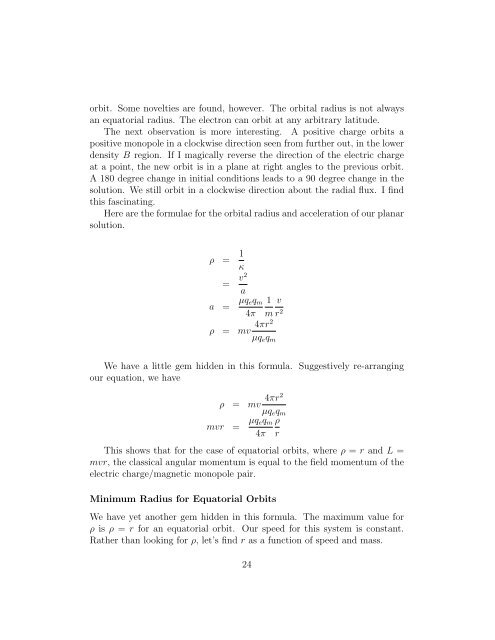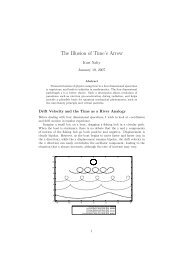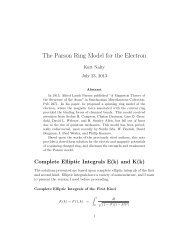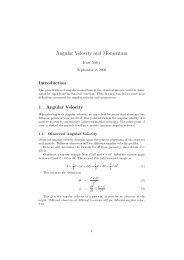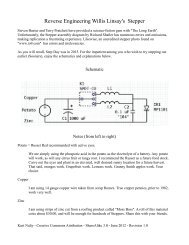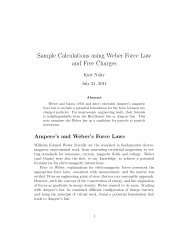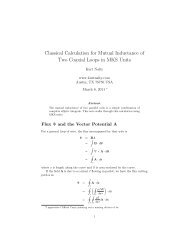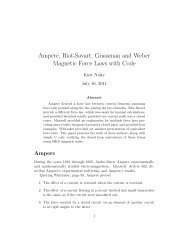Exercises with Magnetic Monopoles - Kurt Nalty
Exercises with Magnetic Monopoles - Kurt Nalty
Exercises with Magnetic Monopoles - Kurt Nalty
Create successful ePaper yourself
Turn your PDF publications into a flip-book with our unique Google optimized e-Paper software.
orbit. Some novelties are found, however. The orbital radius is not always<br />
an equatorial radius. The electron can orbit at any arbitrary latitude.<br />
The next observation is more interesting. A positive charge orbits a<br />
positive monopole in a clockwise direction seen from further out, in the lower<br />
density B region. If I magically reverse the direction of the electric charge<br />
at a point, the new orbit is in a plane at right angles to the previous orbit.<br />
A 180 degree change in initial conditions leads to a 90 degree change in the<br />
solution. We still orbit in a clockwise direction about the radial flux. I find<br />
this fascinating.<br />
Here are the formulae for the orbital radius and acceleration of our planar<br />
solution.<br />
ρ = 1 κ<br />
= v2<br />
a<br />
a = µq eq m<br />
4π<br />
1 v<br />
m<br />
ρ = mv 4πr2<br />
µq e q m<br />
r 2<br />
We have a little gem hidden in this formula. Suggestively re-arranging<br />
our equation, we have<br />
ρ = mv 4πr2<br />
µq e q m<br />
mvr = µq eq m ρ<br />
4π r<br />
This shows that for the case of equatorial orbits, where ρ = r and L =<br />
mvr, the classical angular momentum is equal to the field momentum of the<br />
electric charge/magnetic monopole pair.<br />
Minimum Radius for Equatorial Orbits<br />
We have yet another gem hidden in this formula. The maximum value for<br />
ρ is ρ = r for an equatorial orbit. Our speed for this system is constant.<br />
Rather than looking for ρ, let’s find r as a function of speed and mass.<br />
24


